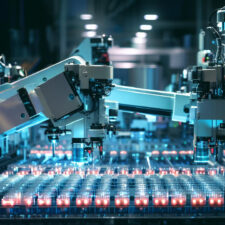With the increasing competition in the market, businesses are always looking for ways to increase their productivity while reducing their costs. One of the most effective ways to achieve this is through production automation.
Production automation refers to the use of technology and machinery to perform tasks that were previously done manually. This process not only increases the speed and efficiency of production but also reduces the need for human intervention, which in turn reduces the risk of errors and increases the product's consistency.
In this article, we will discuss the benefits of production automation, the industries that can benefit from it, the different types of automation, and the challenges faced during the implementation of automation.
Benefits of Production Automation
- Increased productivity: Automation can perform repetitive tasks much faster than humans, which leads to an increase in productivity.
- Improved product quality: Automation ensures that each product is made to the same standard, reducing the risk of defects.
- Reduced labor costs: Automation reduces the need for human labor, leading to a reduction in labor costs.
- Enhanced safety: Automation can perform tasks that are dangerous for humans, reducing the risk of accidents.
- Increased capacity: Automation allows for an increase in production capacity, which can help businesses meet demand during peak times.
Industries that can Benefit from Production Automation
- Manufacturing: The manufacturing industry is one of the biggest users of production automation. Automation is used in various stages of the manufacturing process, from assembly lines to quality control.
- Agriculture: Automation is used in agriculture to perform tasks such as planting, harvesting, and sorting.
- Healthcare: Automation is used in healthcare to perform tasks such as administering medication and monitoring patients.
- Logistics: Automation is used in logistics to perform tasks such as sorting and packing.
Types of Automation
- Robotic automation: Robotic automation is the use of robots to perform tasks. This type of automation is commonly used in manufacturing and packaging.
- Process automation: Process automation is the use of software to automate business processes such as data entry, invoice processing, and customer service.
- Machine vision: Machine vision is the use of cameras and software to perform tasks such as inspection and quality control.
- Artificial intelligence: Artificial intelligence is the use of algorithms to perform tasks that would normally require human intelligence, such as decision-making and problem-solving.
Challenges of Implementation
- Cost: The cost of implementing automation can be high, including the cost of machinery, software, and training.
- Resistance to change: Employees may be resistant to change, which can make it difficult to implement automation.
- Maintenance: Automation requires regular maintenance to ensure that it continues to operate efficiently.
- Integration: Integrating automation with existing systems can be challenging and requires careful planning.
In conclusion, production automation is a powerful tool that can help businesses increase productivity, reduce costs, and improve product quality. With the right implementation strategy and support, businesses can successfully implement automation to stay ahead of their competition and achieve their goals.


